40m OCF Spiral Dipole
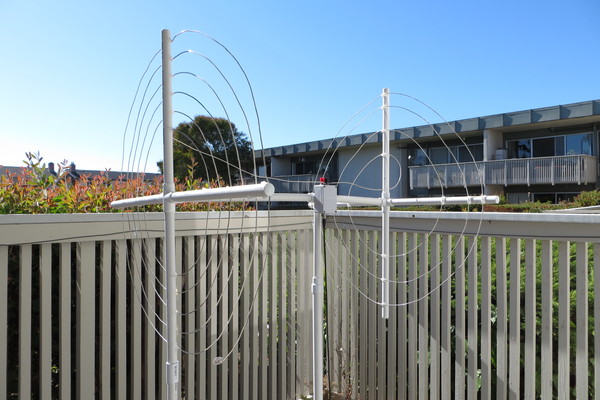 |
Note: I’ve learned since building this project that this antenna does not radiate very efficiently, and acts more like a well-matched resistive load than an antenna :-). While it may have good VSWR that’s easy to tune up, it may not perform very well. Check out the ham stick mini-dipole as a better alternative for a space constrained antenna.
This antenna is an off-center fed spiral dipole for 40 meters, based on KN9B’s spiral dipole. The spiral dipole is very compact, making it well-suited for limited space (like an apartment patio), while the off-center feed gives the antenna some multiband capability. The spiral dipole dimensions are 38.5 inches by 38.5 inches, and it stands 80.5 inches tall and 38.5 inches wide with its base.
Off-center fed dipoles have an impedance in the neighborhood of 200 ohms at their center frequency, so a 4:1 impedance ratio on the balun is essential to effectively match the 50 ohms of the rig.
I made my first HF contacts with this antenna, using a Yaesu FT-450D rig, operating PSK31 with Fldigi on 40 meters.
Pictures of the build follow below, along with VSWR sweeps measured by a RigExpert AA-30 antenna analyzer. I wrote some tools to interface with the antenna analyzer, and to plot and manipulate its impedance sweeps, which are available on GitHub at rigexpert-tools.
WSPRnet Results
Running WSPR at 5 watts on 40 meters for about 24 hours produced many spots in the United States. WSPRnet showed stations in Washington, Minnesota, Connecticut, Texas, and Hawaii were able to exchange transmissions with my station in the San Francisco bay area. The Japan and Australia spots were receive-only transmissions by my station.
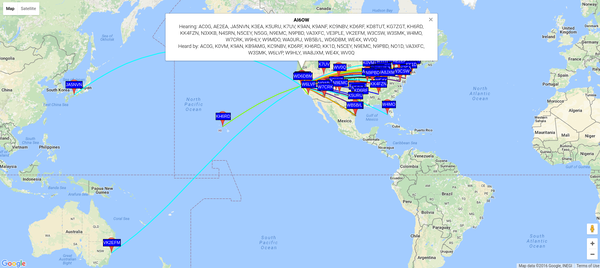 |
4:1 Guanella Current balun
The current balun build follows the schematic found on VK6YSF’s 1:4 Guanella Current Balun page.
Parts
- 1x 16 AWG enameled wire - Jameco 2098371
- 1x 100x65x50mm enclosure - Amazon
- 2x 36mm ferrite core toroid - Amazon
- 1x Female BNC solder-cup connector - Amazon
- 1x Wire dual binding post - Jameco 2144024
- 2x zipties for mounting - Home Depot
Pictures
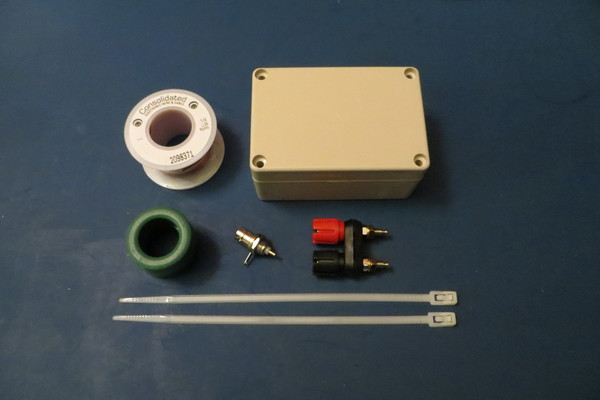 |
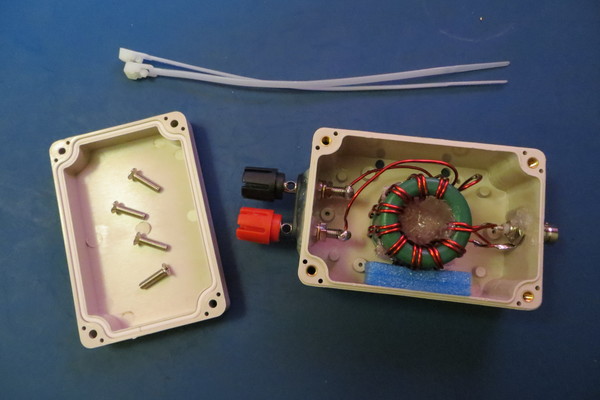 |
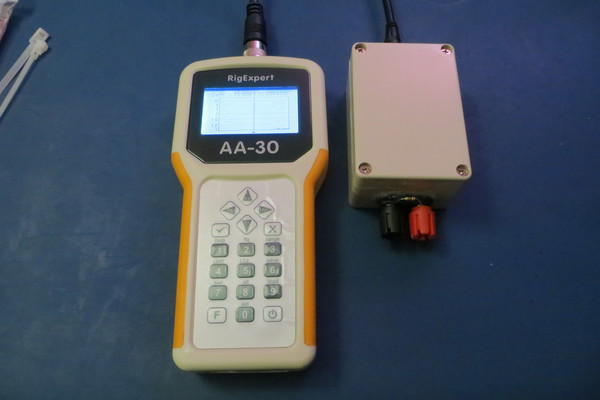 |
VSWR
The VSWR sweep of the 4:1 current balun terminated with a 200 ohm load shows the balun effectively transforms the impedance to 50 ohms across HF.
Spiral Dipole
The spiral dipole build follows the measurements found in the 40m OCF Spiral Dipole DIY Instructions on KN9B’s spiral dipole page, but the structure materials are simplified to just 3/4” PVC and various PVC cross fittings.
The 6-way cross used at one end and the 3-way tee used in the middle allow the antenna to be mounted in either vertical or horizontal configurations.
Parts
- 1x 4:1 current balun (from above)
- 1x 3 ft. BNC Male to PL-259 Male RG-8X coax - Amazon
- 1x 14 AWG, 100 ft. solid white THHN wire - Home Depot
- 26’ 10” for short end
- 40’ 2” for long end
- 8x 18” long 3/4” PVC - Home Depot
- 1x 13.75” long 3/4” PVC - Home Depot
- 1x 21” long 3/4” PVC - Home Depot
- 8x 3/4” PVC end caps - Formufit F034IDC-WH, Amazon
- 1x 3/4” PVC tee - Formufit F034TEE-WH
- 1x 3/4” PVC 5-way cross - Formufit F0345WC-WH
- 1x 3/4” PVC 6-way cross - FlexPVC 486-007
- 1x 1” to 3/4” reducer coupler (optional, for mounting) - FlexPVC 429-131
- Hot glue - Home Depot
Pictures
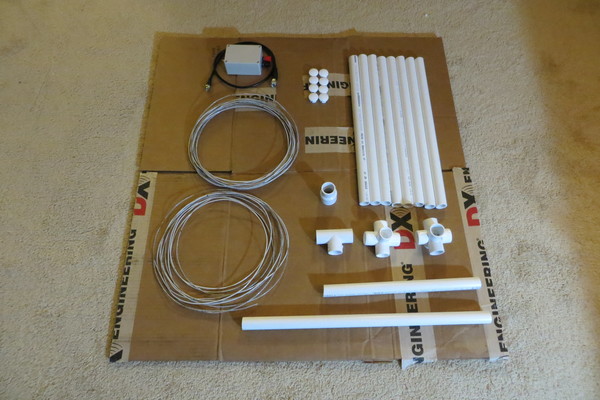 |
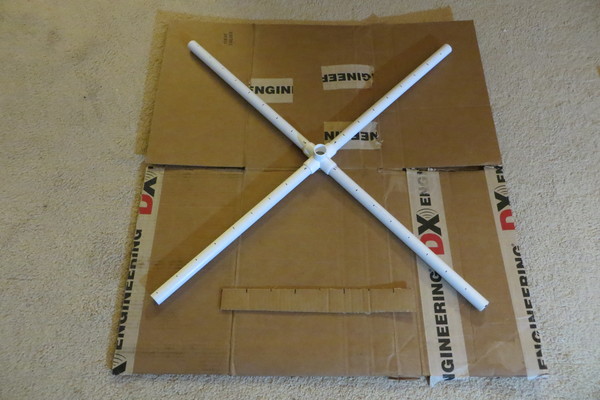 |
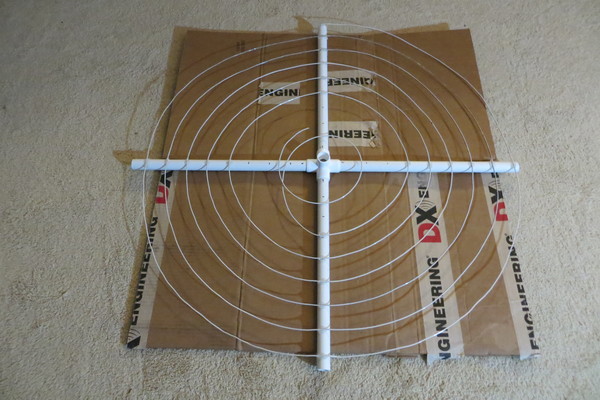 |
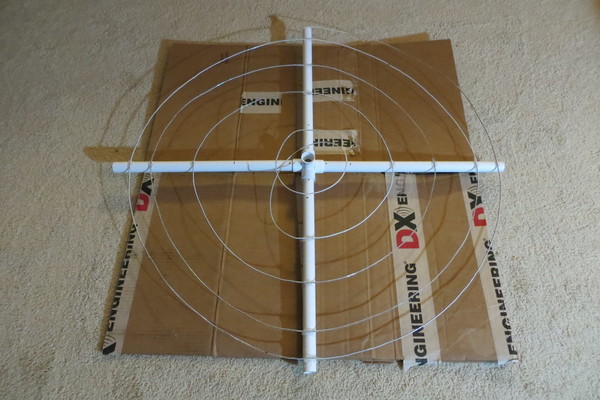 |
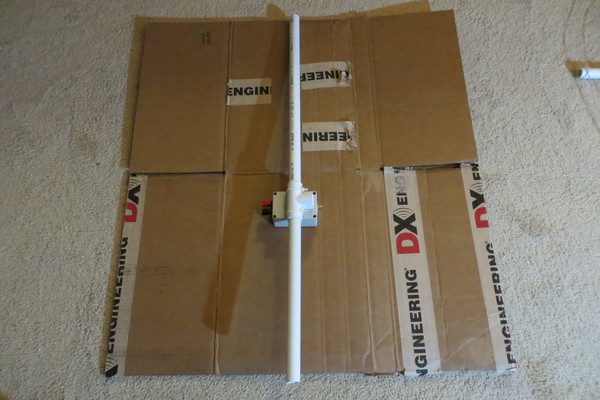 |
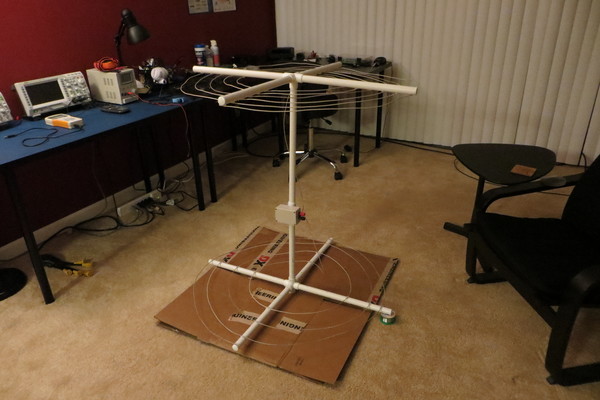 |
VSWR Vertical Orientation
The VSWR sweep of the antenna mounted in the vertical orientation showed good return loss near 40m, but the other points of absorption near 12 MHz and 20 MHz were outside any ham radio bands, and otherwise the VSWR was fairly high elsewhere.
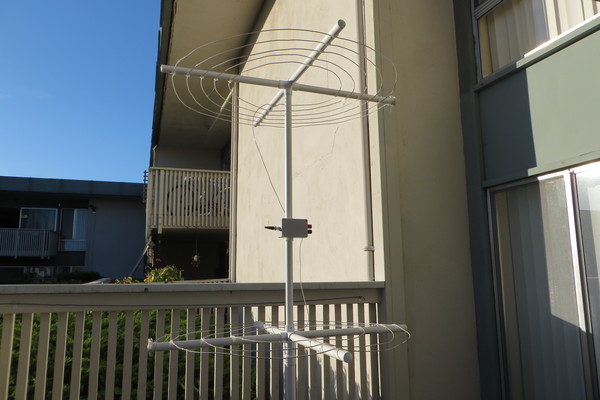 |
VSWR Horizontal Orientation
The VSWR sweep of the antenna mounted in the horizontal orientation was much more promising. The antenna has a VSWR below 3 throughout all of the HF ham radio bands 60m and higher. Of course, this doesn’t mean the antenna is necessarily radiating efficiently at those bands, but it’s a good start.
I tuned the antenna by curling back the ends of the dipole to shift the minimum VSWR in the 40m band up to 7.150 MHz, with a VSWR of 1.26. In the 15m and 10m bands, the antenna has a VSWR of under 2.
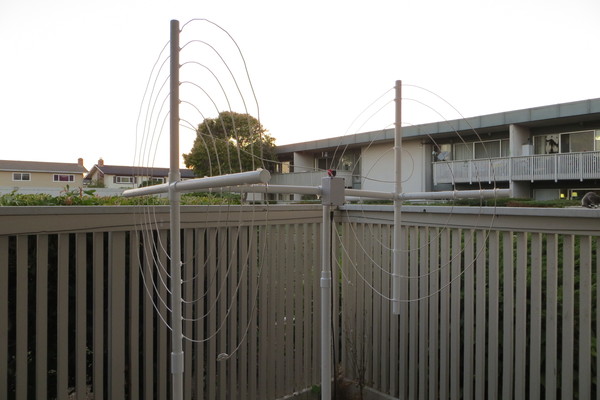 |
